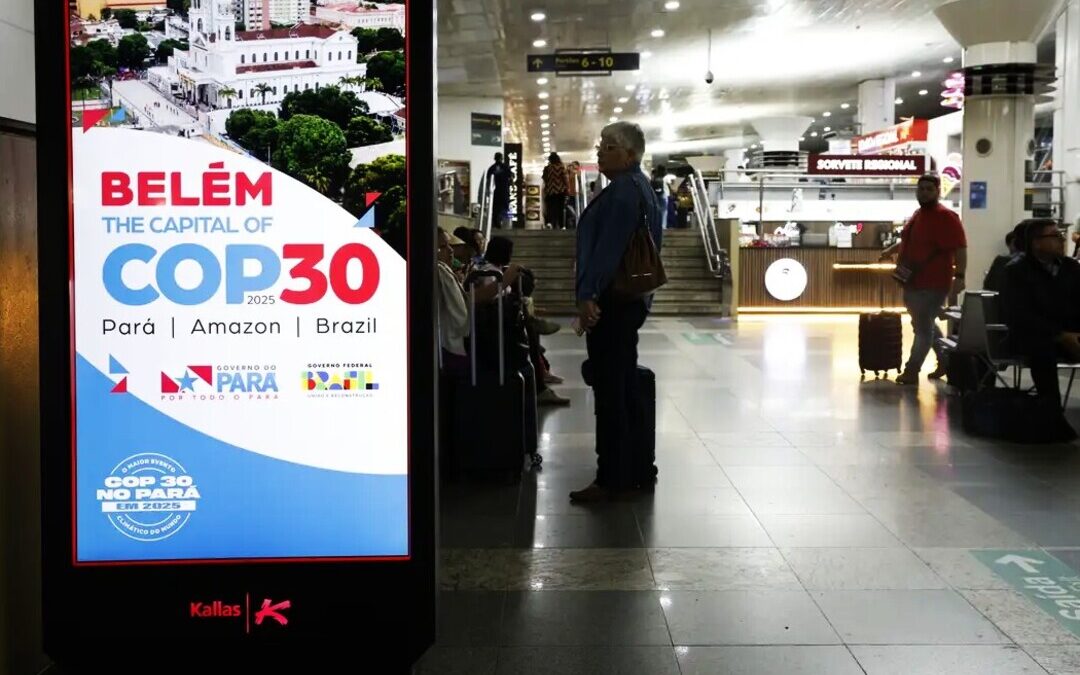C2ES Urges $1.3 Trillion Climate Finance Push Ahead of COP30 in Belém
Global push for $1.3 trillion climate finance faces debt, political rifts and urgent need to support developing nations ahead of COP30 Belém.
The world must rapidly scale up climate finance to $1.3 trillion a year to meet global climate goals, with developing countries as the top priority, the US-based environmental firm Center for Climate and Energy Solutions said ahead of COP30 Belém.
The report, titled “Landing the Baku to Belém Roadmap,” said the roadmap being prepared ahead of November’s COP30 climate summit in Belém, Brazil, must address declining public climate finance, rising debt burdens, and geopolitical headwinds that threaten progress.
Finance Gap Widens
Global climate finance has grown steadily over the past decade, spurred by falling clean technology costs and stronger policy frameworks. But C2ES warned that progress is slowing as developed countries shift aid priorities and the cost of capital rises, particularly in developing economies.
“The outlook for public climate finance is bleak and will continue to undermine the ability of developed countries to meet their obligations under the Paris Agreement,” the report said. It urged governments to leverage limited public funds to unlock greater flows of private capital.
Spotlight on Developing Countries
The Indo-Pacific, which accounts for 60 percent of global gross domestic product and 65 percent of the world’s population, is likely to remain the focal point for climate investment.
China, meanwhile, is expanding its influence through record Belt and Road Initiative spending and plans to launch a new development bank offering $1.4 billion in loans by 2028.
While some developing countries without obligations under Article 9 of the Paris Agreement are making voluntary pledges, C2ES noted that political divides among developed nations could slow momentum.
Roadmap Under Pressure
The Baku to Belém Roadmap, a joint initiative of Brazil and Azerbaijan, is one of the most anticipated climate finance deliverables of the year. Its final version is expected in October, ahead of the UN climate change conference, also known as COP30, scheduled for November this year.
C2ES stated that the roadmap should not only chart the path to $1.3 trillion but also serve as a bridge to other forums better suited to scaling finance, such as multilateral development banks or a proposed Climate Council under the Brazilian COP30 presidency.
“The roadmap must be seen as the beginning of the long path to scaling climate finance into the trillions, rather than as an end in itself,” the report said.
Political Signals Needed
The report called for strong political signals to legitimize collaboration on reforms to debt, domestic resource mobilization and enabling environments for investment. It also recommended greater emphasis on linking climate finance with trade and supply chain resilience.
Implementation, C2ES stressed, is the accurate measure of success. With the G7 and G20 unlikely to drive the agenda, options such as a UN secretary-general–led high-level group or the World Economic Forum could provide platforms for advancing climate finance after COP30.
“Ultimately, greater public international finance is critical to support sectors and countries that private sources cannot reach,” C2ES said. “But this cannot be the only avenue—the challenge ahead requires every available instrument.”
Also Read:
Climate Finance Shortfalls Slow Developing Nations’ Adaptation Efforts
Nirmal Menon
Related posts

Subscribe
Error: Contact form not found.


